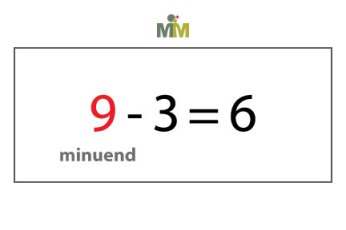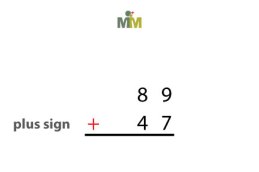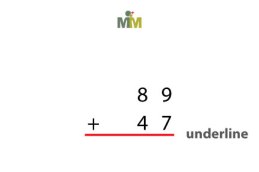
Necessity is truly the mother of invention. Throughout the history of mathematics, different types of numbers were invented to deal with a variety of situations. Lets start our exploration of mathematical numbers by first identifying the different types of numbers we use. I am expressing the five different types of numbers visually in this Venn Diagram.
 The first numbers to be invented in many cultures were counting numbers. It evolved out of a universal need to document how many objects we have in a particular situation. The related concept of addition developed for similar reasons. In mathematics, we call these counting numbers the set of natural numbers. This set is usually represented as {N}. The elements of {N} are {1,2,3,4,5,6,7,8,9,10,…}.
The first numbers to be invented in many cultures were counting numbers. It evolved out of a universal need to document how many objects we have in a particular situation. The related concept of addition developed for similar reasons. In mathematics, we call these counting numbers the set of natural numbers. This set is usually represented as {N}. The elements of {N} are {1,2,3,4,5,6,7,8,9,10,…}.
 When we are counting, we are adding objects together to find its quantity. But what if we were to remove objects from a group? The need to express the removal of objects lead to the creation of negative forms of natural numbers. The related concept of subtraction developed for similar reasons. We call this set negative addends. There is no letter of the alphabet that is commonly used to represent this set. The elements of this set are {-1,-2,-3,-4,-5,-6,-7,-8,-9,-10,….}.
When we are counting, we are adding objects together to find its quantity. But what if we were to remove objects from a group? The need to express the removal of objects lead to the creation of negative forms of natural numbers. The related concept of subtraction developed for similar reasons. We call this set negative addends. There is no letter of the alphabet that is commonly used to represent this set. The elements of this set are {-1,-2,-3,-4,-5,-6,-7,-8,-9,-10,….}.
 When I have four objects in my hand and one person takes two objects and a second person takes two objects, how do I mathematically express the fact that I no longer have any objects in my hand? A numerical symbol was needed to represent “nothing.” We use the symbol called zero. This is a set that has only one element, the symbol we use to represent “nothing,” {0}. It is also an important placeholder used in the decimal notation system as well as expressing any numbers greater than 9.
When I have four objects in my hand and one person takes two objects and a second person takes two objects, how do I mathematically express the fact that I no longer have any objects in my hand? A numerical symbol was needed to represent “nothing.” We use the symbol called zero. This is a set that has only one element, the symbol we use to represent “nothing,” {0}. It is also an important placeholder used in the decimal notation system as well as expressing any numbers greater than 9.
 You may have heard the term whole numbers used in math classes. This set is usually represented as {W}. The set {W} is nothing more than the union of the set of natural numbers {N} and the set zero {0}. The set of natural numbers {N} is a subset of {W}. The set zero {0} is also a subset of {W}.
You may have heard the term whole numbers used in math classes. This set is usually represented as {W}. The set {W} is nothing more than the union of the set of natural numbers {N} and the set zero {0}. The set of natural numbers {N} is a subset of {W}. The set zero {0} is also a subset of {W}.
The elements of {W} are {0,1,2,3,4,5,6,7,8,9,10,…}.
 Another term commonly used in math is integers. This set is usually represented as {Z}. The set {Z} is the union of three sets: the set of natural numbers {N}, zero {0}, and the set of negative addends. Therefore, the elements of {Z} are
Another term commonly used in math is integers. This set is usually represented as {Z}. The set {Z} is the union of three sets: the set of natural numbers {N}, zero {0}, and the set of negative addends. Therefore, the elements of {Z} are
{…,-8,-7,-6,-5,-4,-3,-2,-1,0,1,2,3,4,5,6,7,8,…}.
 For the longest time, mathematicians believed that all numbers could be expressed as a fractions: the ratio of two numbers, like ¾. They referred to these numbers as rational numbers. This set is usually represented as {Q}. We will explore the concept of fractions in future blogs. Even integers can be expressed as fractions (for example, 3=3/1, -5=-5/1). Therefore the set of integers {Z} is a subset of the set {Q}. The elements of {Q} are all numbers that can be written in the form m/n, where n ≠ 0.
For the longest time, mathematicians believed that all numbers could be expressed as a fractions: the ratio of two numbers, like ¾. They referred to these numbers as rational numbers. This set is usually represented as {Q}. We will explore the concept of fractions in future blogs. Even integers can be expressed as fractions (for example, 3=3/1, -5=-5/1). Therefore the set of integers {Z} is a subset of the set {Q}. The elements of {Q} are all numbers that can be written in the form m/n, where n ≠ 0.
 Unfortunately, it was discovered that not all quantities could be expressed as a fraction. Due to the puzzling nature of these seemingly quirky numbers, they collectively became known as irrational numbers. The set is usually represented as {I}. The elements of {I} are all numbers that cannot be represented as a fraction. The value of Pi (π), the ratio of a circle’s circumference to its diameter, is one such irrational number.
Unfortunately, it was discovered that not all quantities could be expressed as a fraction. Due to the puzzling nature of these seemingly quirky numbers, they collectively became known as irrational numbers. The set is usually represented as {I}. The elements of {I} are all numbers that cannot be represented as a fraction. The value of Pi (π), the ratio of a circle’s circumference to its diameter, is one such irrational number.
So these are the sets and partitions that make up the set of real numbers. This set is usually represented as {R}. All the numbers you will come across will be elements of one or more of these sets. And they are all real numbers… well, almost all. There are numbers called complex numbers which pop up in certain situations, but we’ll leave that for another blog… maybe.




































